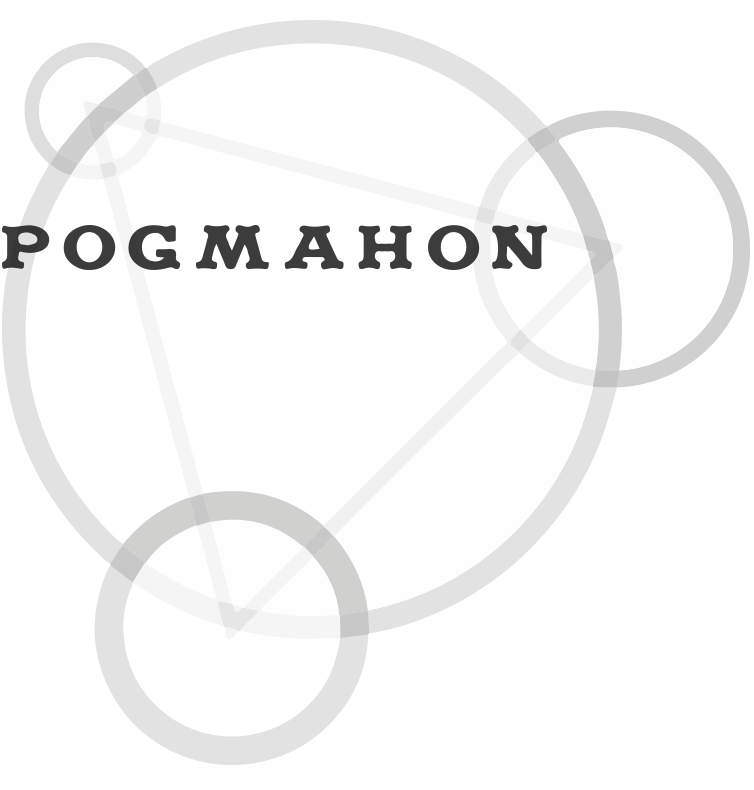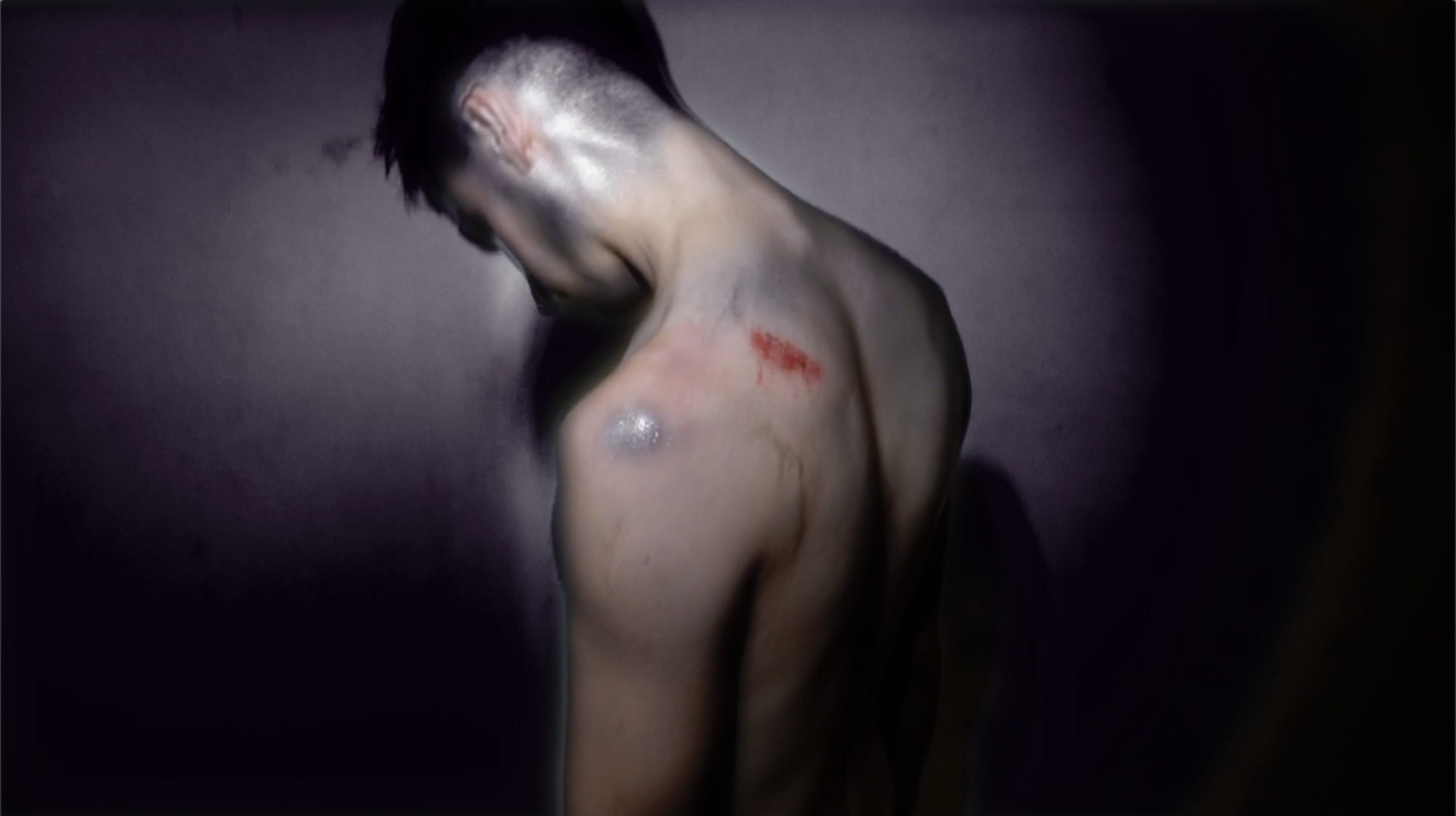TRAUMA Beograd
Der Körper vergisst nicht
Eine Wanderaussstellung über Traumata bedingt durch Kriegserfahrungen, Geschlechter Diskriminierung, Fremdenfeindlichkeit, Gewalt
A travelling exhibition about traumas caused by war experiences, gender discrimination, xenophobia, violence
OPENING 6. July, 2023 7 pm
Duration 7. – 29. July, 2023
MONOLOG Gallery
Cetinjska 15, 11000 Belgrade
In cooperation with MONOLOG Gallery Belgrade and Austrian Cultural Forum Belgrade
KÜNSTLER.INNEN / ARTIST
Guadalupe Aldrete * Mila Balzhieva * Paula Flores * Kyungrim Lim Jang * Hubert Hasler *
Gabriel Virgilio Luciani * Vera Klimentyeva * Isidora Krstic *
Bojana Fuzinato* Natalia Papaeva * Laura Rambelli *
Curator Denise Parizek
“The mind, however, keeps turning to the trauma – as if there were a splinter there that needs to be reintegrated. This also coincides with the observations of modern psychology. When a trauma is triggerd, i.e. something reminds the affected person of the situation (even such small things as smells, colours, words), their body system numbs itself. They no longer feel arms or legs, report ‘falling out of their body’, faint – anything to avoid experiencing the same pain again. The situation that can never be fully told, that cannot be woven into one’s life narrative, is simultaneously everywhere and nowhere, always interfering but never available, filling everything up and always empty.”
Kim de l`Horizon Blutbuch / Dumont
Die Verbindung zwischen den Wörtern “Trauma” und “Traum” enthüllt eine Beziehung, die uns konzeptuell und philosophisch tiefgründige Zusammenhänge aufzeigt. Im Wort “Trauma” finden wir das Wort “Traum” wieder. Ein Trauma kann uns in unseren Träumen und Hoffnungen verletzen und uns gefangen halten.
Der Traum hingegen symbolisiert eine Vision, eine Vorstellung, die unseren Geist erfüllt. Er öffnet einen Raum der Möglichkeiten, in dem unsere Kreativität fließen kann. Im Wort “Traum” finden wir auch das Wort “Raum”. Der Traum schafft einen Raum der Hoffnung, des Potenzials und der Transformation.
Konzeptuell betrachtet, kann ein Trauma uns in einen begrenzten Raum der Angst und des Schmerzes einschließen. Der Traum hingegen eröffnet uns einen anderen Raum, in dem wir unsere Wünsche manifestieren und unsere innere Welt entfalten können. Der Traum ist ein Raum des Möglichen, der unsere Gedanken und Ideen Form annehmen lässt. Er lädt uns ein, unsere Fantasie zu entfesseln und unsere Vorstellungskraft zu nutzen.
Der Traum ist auch ein Raum der Reflexion und des Wachstums. Durch die Analyse unserer Träume können wir tiefgreifende Erkenntnisse über uns selbst gewinnen. Der Traum ermöglicht uns, unsere Ängste und Hoffnungen zu erkennen und sie in den Kontext unserer Erfahrungen zu stellen. So kann der Traum zu einem Instrument der Selbsterkenntnis und des persönlichen Wachstums werden.
In der Verbindung von “Trauma”, “Traum” und “Raum” liegt eine Einladung zur inneren Transformation. Wir werden aufgefordert, unsere Traumata zu heilen und den Raum für neue Möglichkeiten zu öffnen. Der Traum bietet uns die Chance, unsere Träume zu erkunden und unser volles Potenzial zu entfalten.
Denis Leo Hegic
Pictures of the exhibition
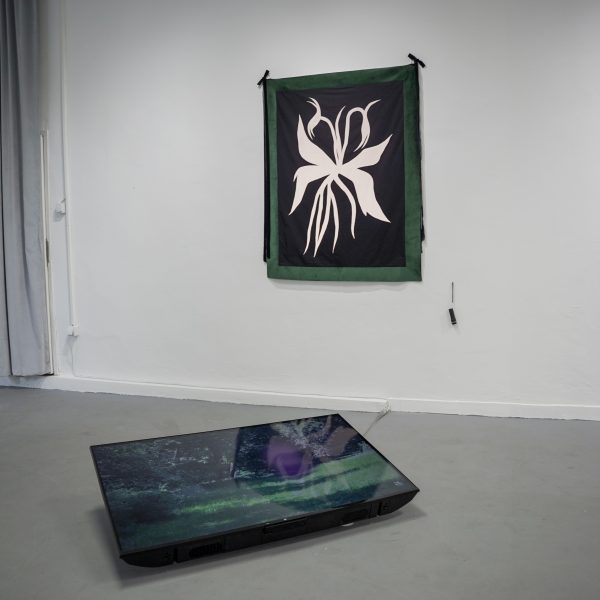
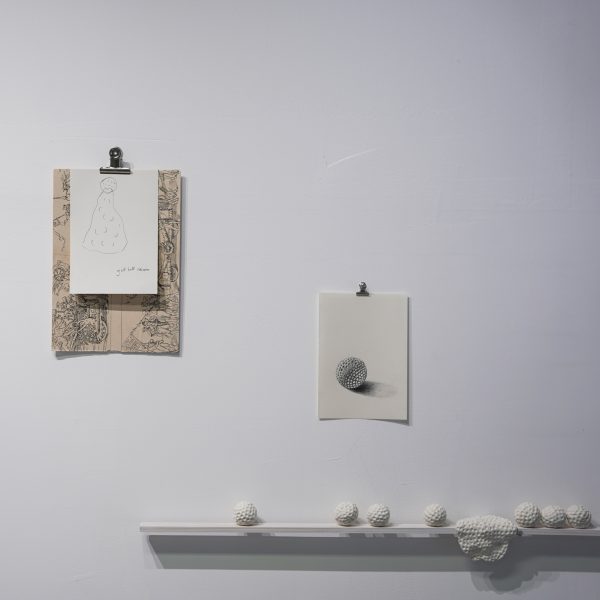
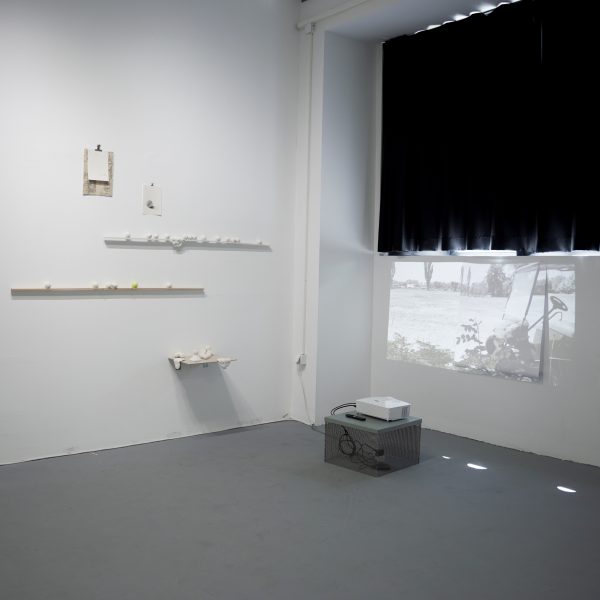
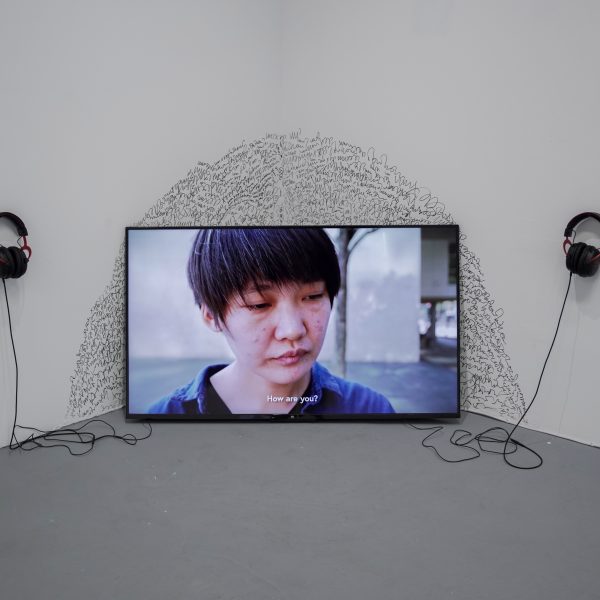
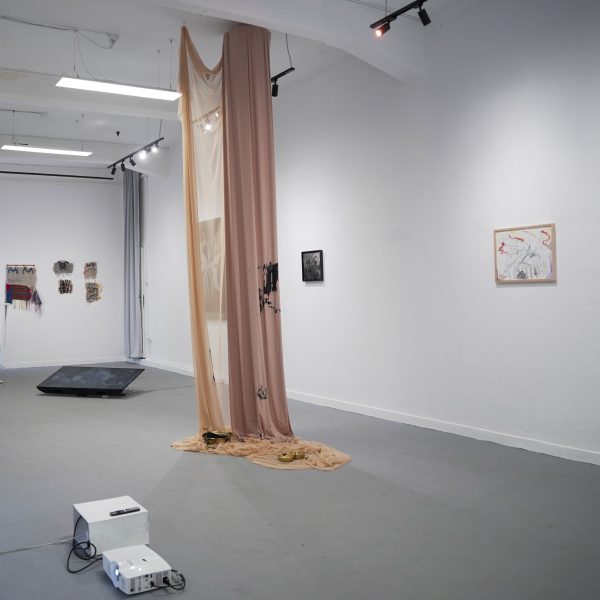
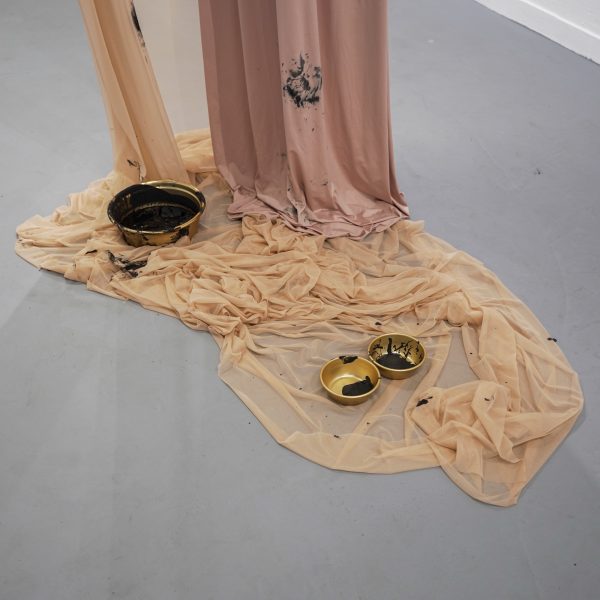
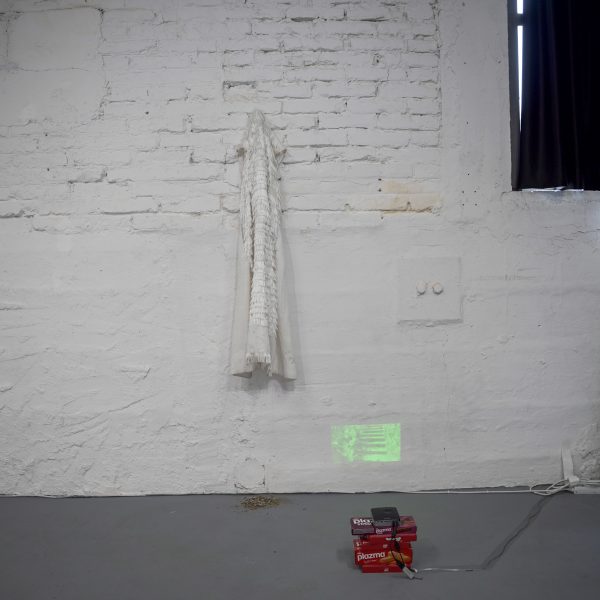
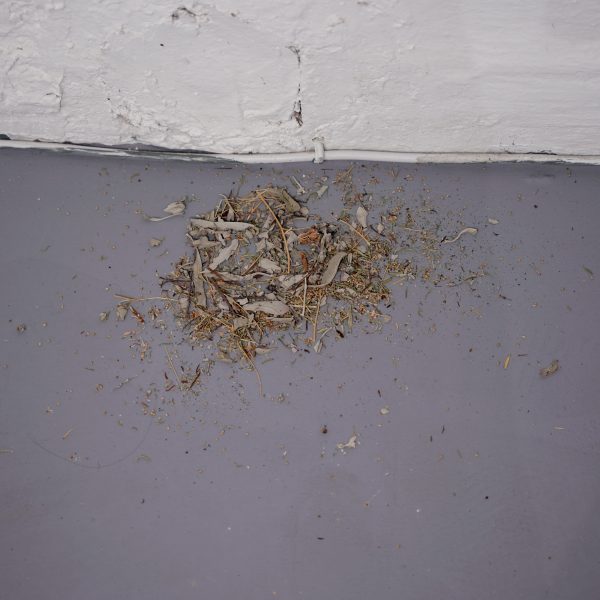
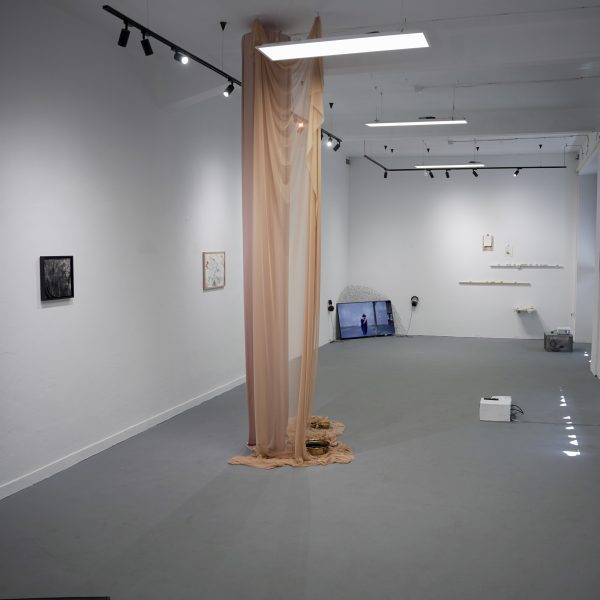

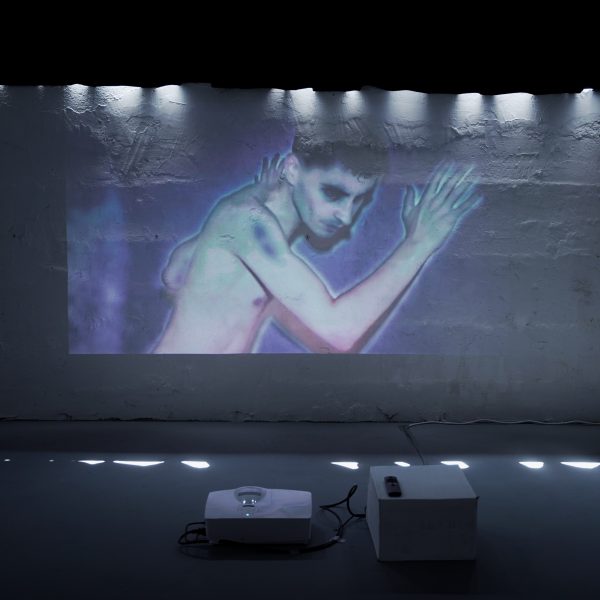
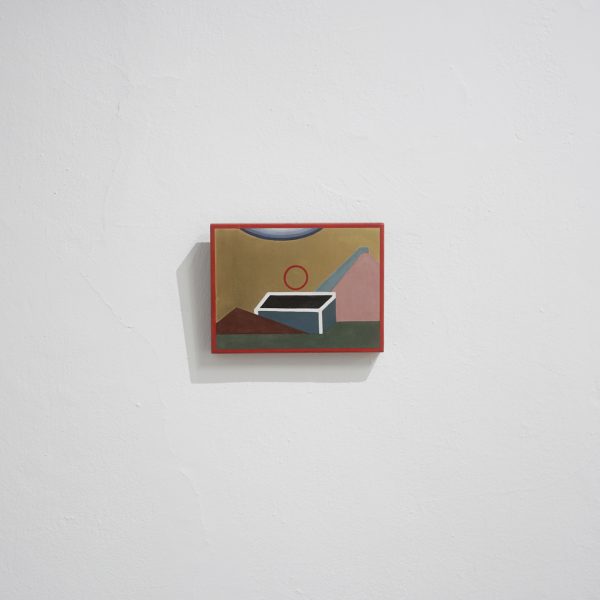
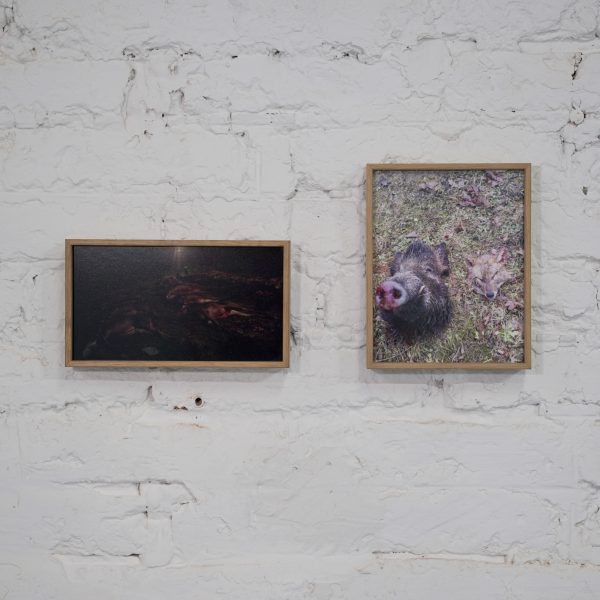
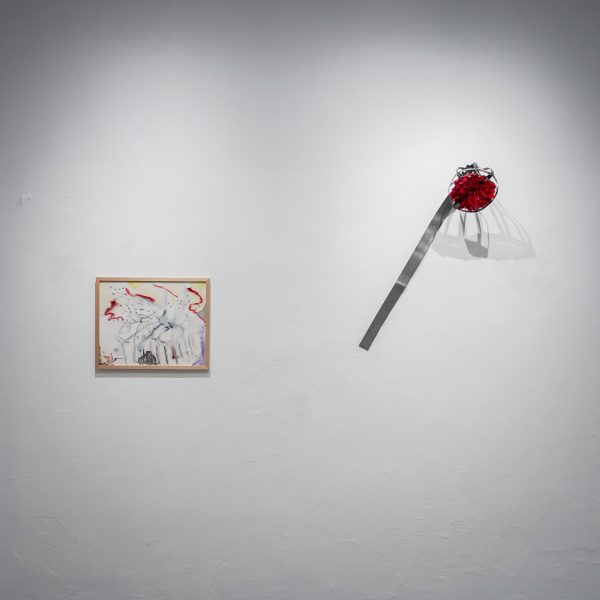
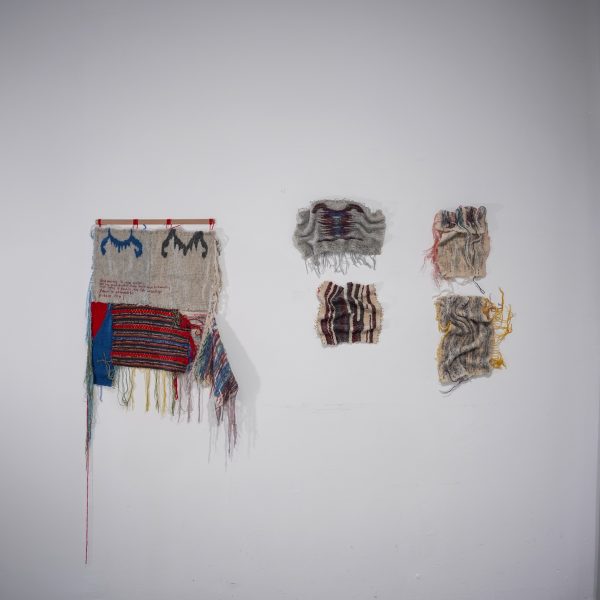
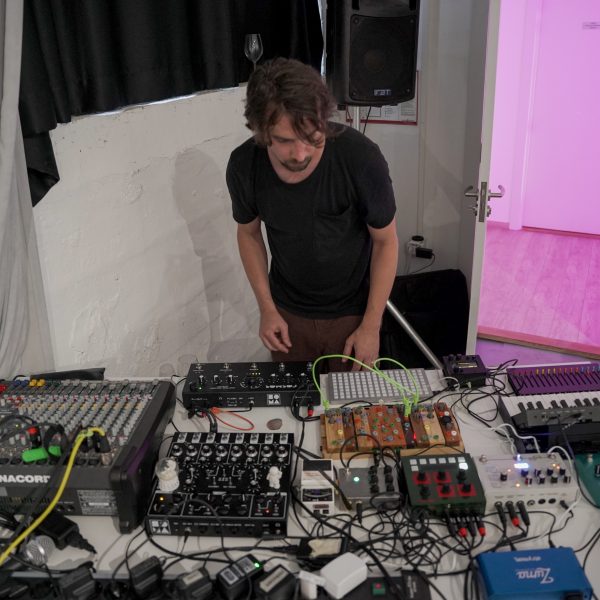
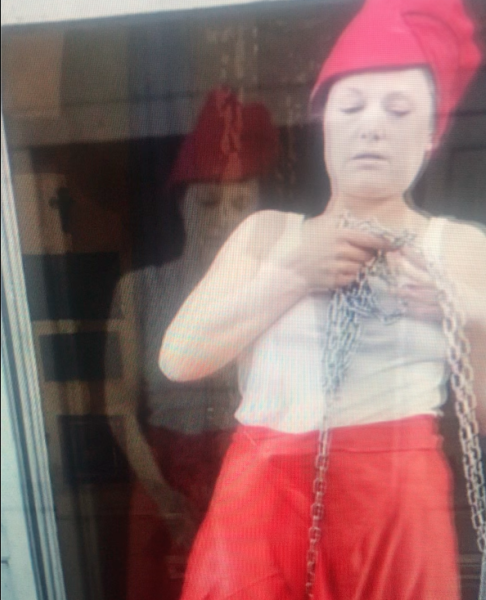
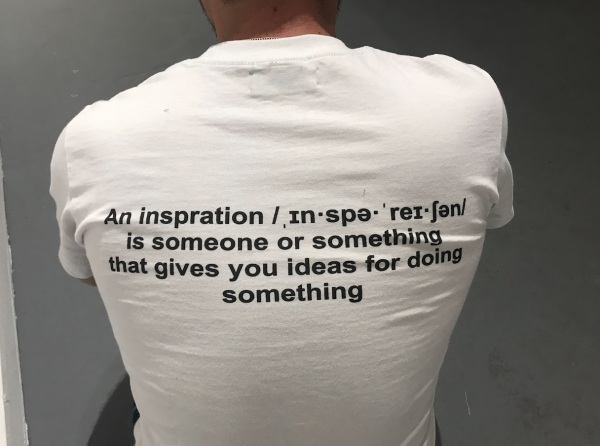
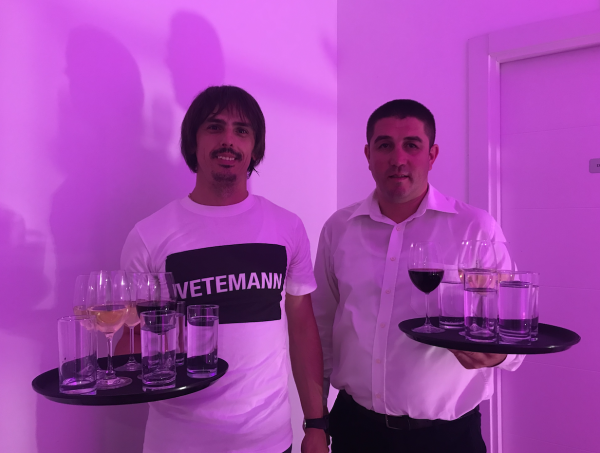
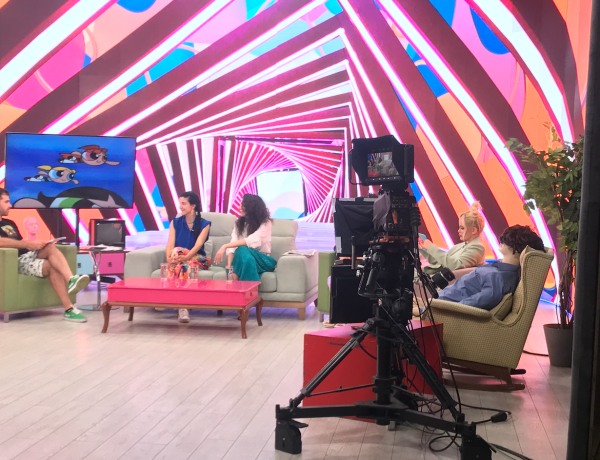
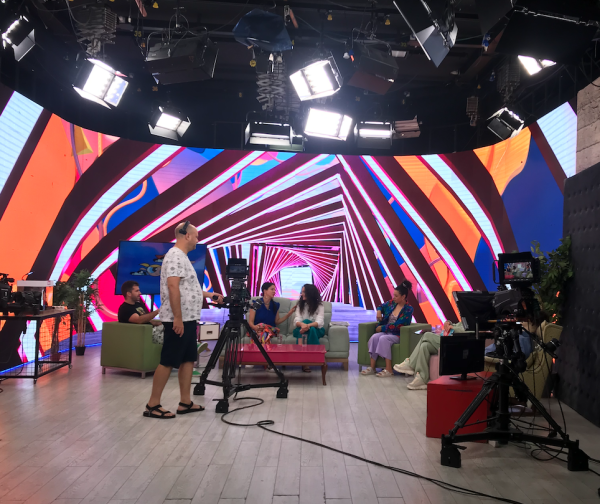
Photocredits by Supermarket Lab/Milos Sovilj & Mute Insurgent 2023 (5 last ones)
MEDIA
The exhibition “Trauma” reflects artists’ encounters with trauma through various media ->> Blic
You can view the exhibition Trauma in the Monolog gallery until July 29 – >> Nedeljnik
Exhibition of 12 foreign artists about trauma caused by gender discrimination, xenophobia and violence ->> Nova.rs
Trauma shown through works of art: Traveling exhibition in the “Monolog” gallery ->> 24sedam.rs
KÜNSTLERISCHE POSITIONEN / ARTISTIC POSITIONS
Its, itz, ytz, ix, hix
2022 | Performance
Inheriting precarity,
precarity concealed and manifested in skin,
in its color, its texture, its weight…
The skin conceals and envelops, hides and protects, therefore it holds secrets and magic*.
People carry the history and heritage of their family and ancestors on and under their skin. The wealth they carry on their backs mysteriously hides the treasure they carry inside. They end up building landscapes off abundance that are not meant for them, that are not meant for everyone. Some people would do anything to get wealth, even break the container that holds it.
*Mayan language and ideology. Chilam Balam.
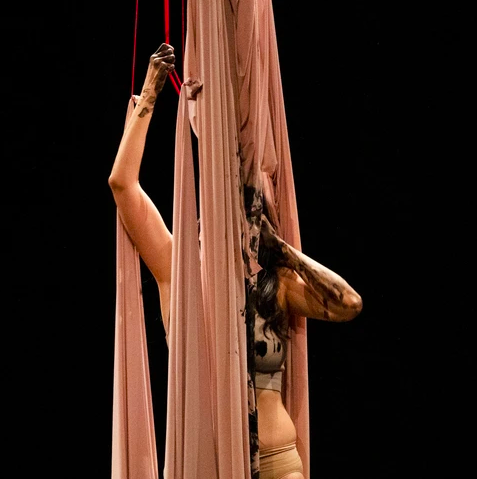
Video-Installation
Moving behind the trees, blending with the environment. Rooting consciousness deep into the forest. Reading hidden symbols. Walking on an invisible path and transforming into something else; a particle of a unified organism. Not many of us remember how to behave in forests. We enter it as conquerors making its space and resources work for us, barely trying to adjust and blend with it. But there are places where one should move carefully, and if one moves even a stone, they should return it where it belongs. If not to respect the environment of these spots, every unseen entity inhabiting these places will leave, and there will be no chance to contact them again. Forest itself is a living being full of mysteries where everything is connected and entangled. What will happen when one enters the forest respectfully and quietly, trying to unify with every living creature and entity? Will the forest show its hidden life and secret messages?
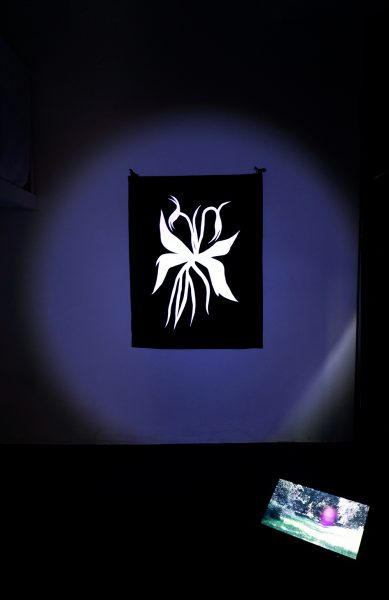
Sculpture / Drawing 2022
The project that draws inspiration from Heracleum Sphondylium. Two of many invasive species that threaten the balance of the European ecosystem. Specifically, Natalia focuses on the appearance of Heracleum commonly called Giant Hogweed which is an impressive-looking plant yet potentially toxic as its sap can cause photodermatitis or photosensitivity.
The choice to deal with these plants was coincidentally organic as we have both seen these plants in Europe, Austria and in the Russian steppe respectively. Upbringing of these alien species and their biological kineses highlights accidental but intriguing historical parallels and reflects the current geopolitical state on a global scale. The purpose of the work is to open a dialogue for urgency, exercise criticism, and question legitimacy, power, and conquest/intrusion while simultaneously allowing issues of identity and immigration to preserve.

Photography 2021
“It’s the biggest species extinction since the dinosaurs disappeared”
Christoph Heinrich, CEO WWF Germany
There is no end in sight to the downward spiral. In its updated Red List of July 9, 2020, the World Conservation Union IUCN now records 32,441 animal and plant species as threatened. That’s more than ever before.
“We humans play a dangerous dual role in the global species Gau. On the one hand, we are destroying species habitats, fueling species extinction. On the other hand, species diversity is the basis for functioning ecosystems, on which we humans ourselves ultimately depend,” Heinrich said. “An intact and diverse natural world gives us food, clean water and other raw materials, regulates the climate and acts as a bulwark against diseases and pandemics. The destruction of nature is primarily at the expense of billions of people in the global South, and their lives often depend directly on the use of natural resources.”
Conservation organizations, fridays for future, last generation, Greta Thunberg, scientists of different fields, all of them have been warning for years, decades, about the devastating consequences of the neoliberal exploitation of our planet as well as the irresponsible waste of resources.
Authors like Margaret Atwood or T.C. Boyle fictionalized in dystopian novels about functional new social structures, chickens without heads, mainly consisting of coveted breast meat, problems with Neopyths and Neozoa.
Natural disasters accumulate, one pandemic follows another, people starve to death due to climate change, and we watch.
Hubert Hasler has long been concerned with Neophytes, using them as an allegory for xenophobia, integrating them photographically and sculpturally in the contemporary art context.
In his new, two-part work “Fleischbeschau & Schweinschakal” on the presentation of the hunted. For Hasler, this is a revelation of the voyeuristic in the struggle against/with/over nature.
Wild boars multiply in our forests unregulated, become in some places a plague due to lack of prey predators.
Out of fear of epidemics, border fences are erected as if a bacterium could be kept out. We find similar reactions in the current fight against pandemics.
The jackal is also an uninvited immigrant. Although jackals do very well in man-made cultural landscapes, they are classified as an enemy by the hunting community.
Who determines what is alien and therefore dangerous to us? And is this assessment subject to the spirit of the times?
Denise Parizek
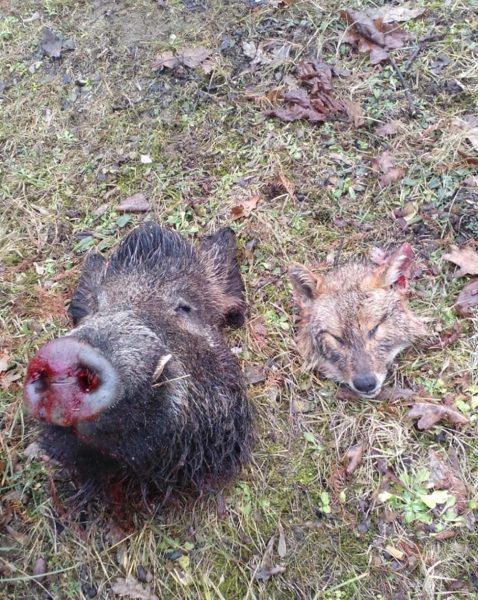
The Artist’s Country Club Dream
2023
Video, essay, clay objects, wooden shelf and wooden sticks, drawings
The shown work titled “The Artist’s Country Club Dream” can be seen as a view into my ongoing research of the intersection of elite sports and colonial heritage. One day, I was biking by the golf grounds of a nearby country club, secluded by tall bushes and a fence. I stopped at the sight of an opening that offered a view onto the spotless golf court. As I was looking onto the golf court, the calm and warm day seemed to belong only to the other side of the fence, the one I was looking onto. I found it ironic how far this whole construct of the country club seemed, although I was standing right in front of it. I thought of all the secrets passed on in wealthy families that I can’t even read about in books, and I thought about the golfers drinking cocktails in the club house. I also wanted to be golfing on this mild summer day. Later on as I was the filming the golf course through the crack in the fence, I was silently gifted a yellow practice ball by the driver collecting the stray balls. This turned out to be the ultimate transgression: an object-member of the country club, exiting this gated community, through the fence and into my hand. The golf ball would be the first artefact in a subsequent research and deconstruction of the sport, as well as the symbols and artefacts found and produced as a result.
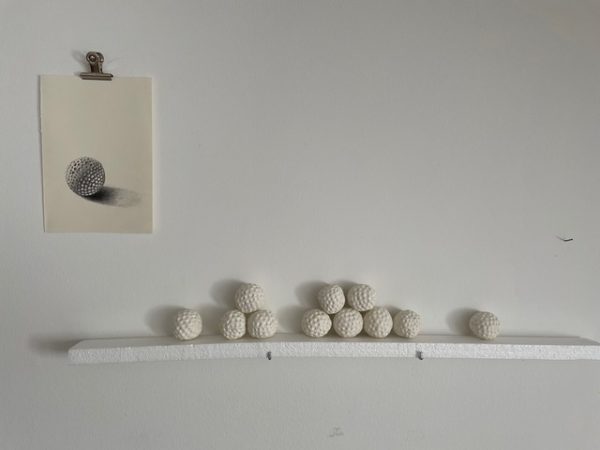
Breakup
5’44
2023
Editing and filming by Vanessa Pey
Additional editing by Clàudia del Barrio
Idea, concept and performance: Gabriel Virgilio Luciani
Special thanks: Sílvia Cabrera
Breakup is a corporal aria birthed on a simmering hot day in the attic of late 19th Century Catalan modernist house. After seeing the Andrzej Żuławski film, Possession (1981), I wanted to approach the topic of a breakup. Feeling uprooted, delirious, alone, forgotten, abandoned, I felt Isabelle Adjani’s gestures came from a place of disjunction. A rupture between wanting to leave a man and yet wanting to save her family; and at the same time wanting to mutate and disappear. The friction between the desires becomes unbearable. Here the convulsions and contortions mimic what the dance the heart does in a complex relationship. After a period of numbness, betrayal, breakup, anger, come anxious pulsations and tricky positions, laced feelings and contradictory movements.
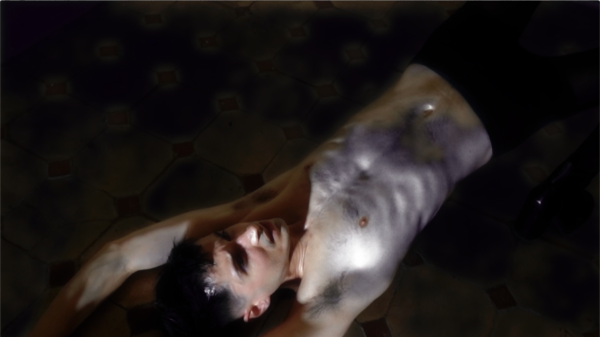
VICARIOUS TEARS Installation und Video
Rivers that flow over skin, over seeds that should have been born. Roots, torn out and thrown into the ocean where they can’t reach the ground and are ever condemned to float until they disintegrate. But there are always remains that can be reintegrated from the tears that come from the ocean. It’s the attempt to catch a reflection from another reflection and keep it for perpetuity.
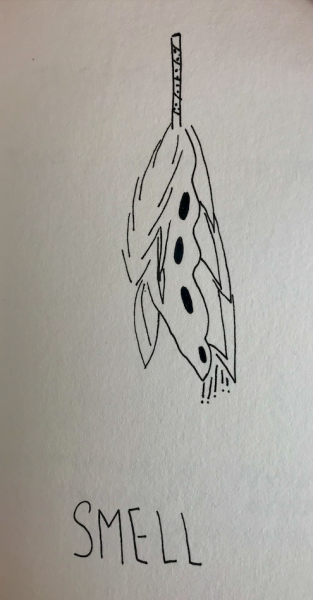
T-Shirts
OG Appropriation (2018) is a project which questions the originality of things that are branded and those that aren’t. Does everything have to be branded to be original? What does making original art, reproducing the artwork, and signing the work mean today? Does the work need to be signed to be original? To what extent is something an inspiration, appropriation, original, or fake, and how does our value system work within these strata? To explore these concepts, I made a fake brand of a French luxury clothing brand and made a fake brand of the fake brand. The Tags at the back of the neck which prove the originality of the products are unseen when in use.
“Luxury isn’t about price anymore,” said Gvasalia. (co-founder of Vetements)
“It’s about scarcity.” – W Magazine
Text Kyungrim Lim Jang
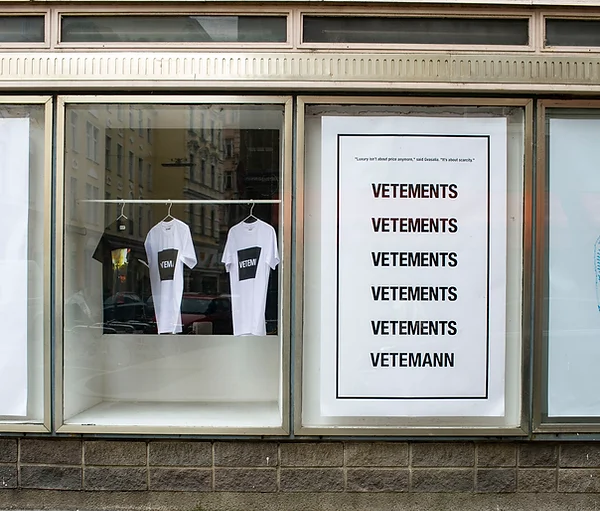
Saint James the Faster
Icon, 2023
In this work, she focuses on an Orthodox saint, Saint Jacob, who was tempted by the devil and committed terrible deeds. Through asceticism, however, he always succeeded in regaining God’s favour, culminating in his canonisation. As Philip Bloom states in his book “Submission”, we all believe in an angry, furious God who allows terrible deeds to be committed and then distributes his favours benevolently. The traumatic impact on our society can be seen every day, be it the atrocities still committed in the name of God and the church, be it power hierarchies established by churches or wars in the name of the Lord.
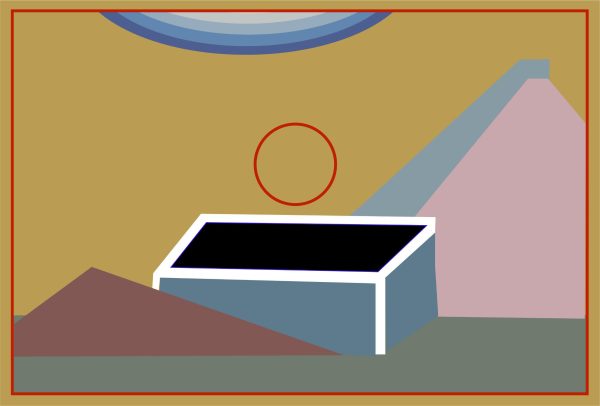
HOW ARE YOU, 2019, VIDEO-PERFORMANCE
Every time I go back home, I see that something has changed. The image I have in my mind about the constellation of our household does not match reality anymore. You leave not only a space, but the daily routine of your family. You have been denied the chance to participate in social happenings. While we share joyful news, the painful moments have been hidden away. Grief is something to deal with by yourself.
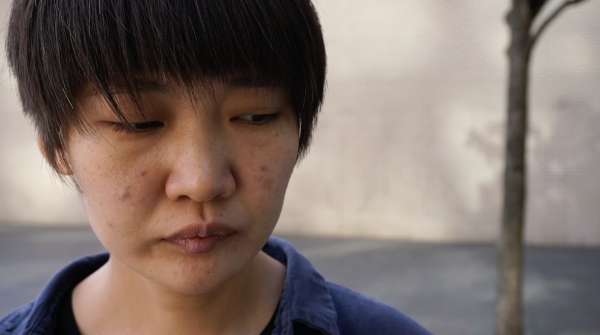
PLACENTA / VIDEO
The video of Placenta, which took place in Pialassa Baiona (RA), will remain visible through the hole in the chapel door for the duration of the exhibition.
The first performance took place in 2018 during the Performance Weekend in Vienna at Gallery 12-14, and the second, narrated in the video, took place in Pialassa Baiona in the Po Delta lagoon. A performance in which the artist Laura Rambelli waited for people in a hold hut in the middle of the lagoon to symbolically hand each participant their own placenta and a personal message. Actress Chiara Li Vecchi led them to the other side of the Barena on a boat typical of the lagoon. The exploration and practice of new rituals that connect man with nature nourish my artistic activity. For this reason, during my performance I will create a symbolic, special and personal placenta for the guests, to restore the magical connection that only the placenta can give.
We are what we feed on….
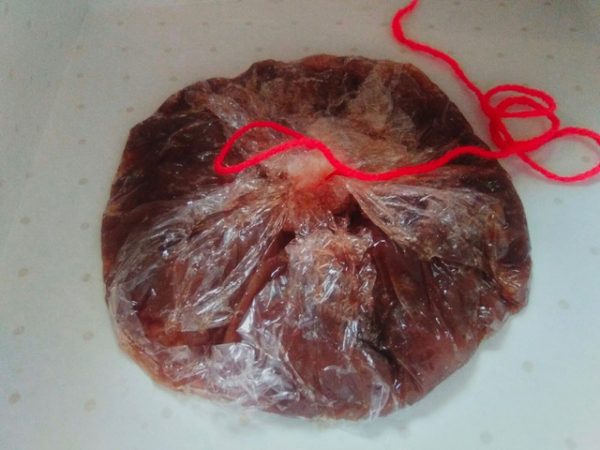
“Private and/or Public” Soft sculpture 2022
Can we be aware of the line between private and public activity in our lives? Is that harder if the subject is the one who creates? Weaving in her room, did my grandmother ever think that by creating that piece of fabric on the loom, her life would go from a private to a public one (inaccessible to her at the time)? By transposing a piece of textile that I weave by hand into an object titled installation in space, I break through the thin line between the private and the public. I make the soft structure of the fabric stop, freezing it, making it hard as stone, so that the outside view can feel how it slides under my fingers, rounded and tender. The production of material on the loom is a very intimate physical moment in which energy moves harmoniously through our body and by repeating the same procedures produces a rhythmic sound with which thoughts relax. The procedure can be viewed as meditative, cathartic, but very private and intimate. Observed throughout history, weaving has been the product of those who spend most of their time at home, who take care of the family and mostly women’s work. For a long time, it had the characteristic of decorative art, the one that is less valuable compared to the art produced by the big names in art history, done mostly by the male gender. As a craft or decorative art, weaving remained in the intimate zone. With its softness, colors, seductive charm, we read it as a woman’s energy. When I shape such energy and publicly present it into an object, it becomes a political act.
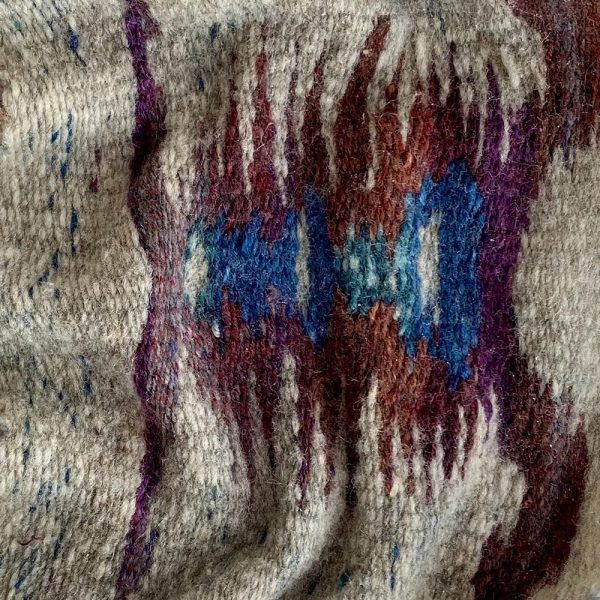
Exploring Trauma and Healing:
Artists Unveil Intimate Perspectives in Monolog gallery
A travelling exhibition about traumas caused by war experiences, gender discrimination,xenophobia, violence
Belgrade, July 6 – The Baby Boomer generation, once hopeful for a brighter future, is now confronted with a world marred by crises and deep-rooted traumas. Against this backdrop, a group of artists come together to unveil their thought-provoking works in an exhibition that delves into the profound impact of trauma and the potential for healing. Titled „Trauma“ the exhibition opens its doors to the public on July 6 at 7 p.m. in Monolog gallery in Cetinjska 15, Belgrade.
As witnesses to history and agents of change, the Baby Boomer generation experienced the sociopolitical shifts between the hippie era and punk subculture. They stood at the crossroads of progress and uncertainty, fighting for causes such as women`s rights, environmental preservation, and equality. However, the traumas of war and conflicts remained distant echoes, failing to impact them personally until the late 80s, when the war in Yugoslavia hit their doorstep.
The exhibition takes a deeply personal approach, reflecting the artists`s own encounters with trauma and their subsequent journeys towards healing. Through various artistic mediums, Paula Flores, Guadalupe Aldrete, Mila Balzhieva, Natalia Gurova, Hubert Hasler, Isidora Krstic, Vera Klimentyeva, Natalia Papaeva, Gabriel Virgilio Luciani and Laura Rambelli invite visitors to question our collective past, present, and the path we tread toward the future.
One installation, created by Paula Flores, reflects on the disconnection between humanity and nature, prompting contemplation about the self-inflicted damage we impose upon ourselves and the environment we inhabit. Guadalupe Aldrete`s performative approach examines the exploitation of resources and people, shedding light on the destructive consequences that stem from greed and the erosion of reason.
The video installation by Mila Balzhieva explores humanity`s behavior as conquerors and exploiters of the forests, reminding us of the intricate interconnectedness that binds all living beings. Natalia Gurova`s work dives into questions of identity, belonging, and historical parallels, engaging viewers in a discourse on power, legitimacy, and immigration.
Hubert Hasler utilizes neophytes as a symbol of xenophobia in his thought-provoking photographic and sculptural representations. By challenging the concept of “alien” and what it means to be dangerous, he questions the prevailing societal narratives shaped by contemporary attitudes.
Isidora Krstic`s video installation reflects on the aspirations of individuals striving for socioeconomic advancement, while Gabriel Luciani`s powerful portrayal of internal struggles calls attention to the imposed constraints of societal conventions.
Vera Klimentyeva`s icon, “Jacob the Faster” delves into the traumatic effects of religious fanaticism and the violence committed in the name of God, sparking contemplation on the role of faith and its impact on society. Natalia Papaeva`s video, “How are you” illuminates the experiences of individuals returning home after an extended period abroad, grappling with the disconnection from their roots and the changed reality they find.
Lastly, Laura Rambelli confronts the trauma of birth, unraveling the emotional and physical separation that occurs during this pivotal moment. Her evocative work invites viewers to contemplate the transformative power of healing and the path towards inner wholeness.
„Trauma“ is a thought-provoking journey into the complexities of trauma and healing. Through the diverse perspectives of these artists, the exhibition calls for introspection, compassion, and collective action to forge a path towards a more harmonious future. The exhibition will be open to the public from July 6 to July 29 in Monolog gallery in Belgrade and curated by Denise Parizek. Visitors are invited to engage with the artwork and artists on the opening night, and explore the Trauma throughout the duration of the exhibition.
About Monolog Gallery:
Denis Leo Hegic and Jan Gustav Fiedler opened a gallery branch of their Berlin-based Museum of Now in Belgrade in May 2022, named Monolog. The gallery is primarily dedicated to the exchange of contemporary art and creators between Belgrade, Berlin, and Vienna, bringing artists from Berlin and Vienna to Belgrade while also presenting the contemporary Serbian scene abroad. Monolog Gallery aims to capture and showcase current trends in contemporary art while also anticipating the future. Located in the former Bajloni Brewery on Cetinjska Street, which is the epicenter of Belgrade`s alternative scene, the gallery provides a platform for creators from around the world to freely express their ideas and explore contemporary themes. Collaborating with artists from all over the world, Monolog has become a bridge between Europe and the Middle East, with a key focus on promoting and developing future technologies, particularly in the cultural industry.
Tamara Sekulovic
CURRICULAE VITAE
Guadalupe Aldrete, früher bekannt als Lala Nomada, ist eine mexikanische multidisziplinäre Künstlerin mit Sitz in Wien. Geboren wurde sie in Mexico, sie studierte in den USA und an der Universität für Angewandte Kunst, Art & Science, Wien.
Mila Balziehva ist eine Künstlerin, die in Burjatien (Ostsibirien) geboren und aufgewachsen ist. Sie lebt und arbeitet in Wien, studiert auf der Universität für Angewandte Künste in Art & Science bei Virgil Widrich. Balziehva stellt international und national aus.
Paula Flores, geboren und aufgewachsen in Mexico. 2010-2014 BA in Visual Arts, Universidad Autónoma de Baja California, Tijuana, México. 2014 Traditional Michoacan Ceramics with Master Potters. Seit drei Jahren studiert sie an der Universität für Angewandte Kunst, Art & Science, Wien.
Kyungrim Lim Jang (장경림, *1992, Seoul, Südkorea) ist eine Künstlerin, die in der westasiatischen Stadt Wien lebt und arbeitet. Das Leben als Ausländerin in Gemeinschaften unterschiedlicher Größenordnung – von Familien bis hin zu Gesellschaften – prägte ihr Interesse an der Konstruktion von Heimat und daran, wie sich die eingebettete Richtung eines Wunsches nach Zugehörigkeit in den zeitgenössischen Medien manifestiert. Sie erforscht, wie unausgesprochene Vereinbarungen durch performatives Sprechen und Schweigen aufrechterhalten und gebrochen werden. Sie verbringt oft Zeit damit, zu beobachten, was an den Kreuzungen von Grenzen, Identifikationen und den Erzählungen, die diese Unterscheidungen tragen, geschieht. Was während des Aufnahme- und Übersetzungsprozesses einer Erzählung verstärkt, gelöscht und verzerrt wird, und die Motive der Programmierung sind ebenfalls von großem Interesse für sie. Sie ist Mitinitiatorin des Künstlerkollektivs Slug and Saliva, zusammen mit Hannah Sakai. Das Kollektiv arbeitet mit geschriebenen und gesprochenen Ausdrücken, um die Kluft zwischen Klang und Bedeutung zu materialisieren. Sie ist Lehrbeauftragte an der Akademie der bildenden Künste Wien.
Isidora Krstic, geboren in Serbien, aufgewachsen in Südafrika, Universitätsabschlüsse in Belgrad (Malerei) und Universität für Angewandte Kunst, Art & Science, Wien. Sie lebt und arbeitet in Wien.
Vera Klimentyeva, geboren in Russland, Ausbildung in Moskau und an der Akadedemie der Bildende Künste Wien. Lebt und arbeitet in Wien. Mitglied des Artist Run Space Vienna, 12-14 contemporary.
GABRIEL VIRGILIO LUCIANI geboren in den USA, lebt und arbeitet er in Barcelona. Das Forschungsgebiet des Kurators Gabriel Virgilio Luciani liegt an der gasförmigen Schnittstelle von Neokorporealität, Poesie, Queer-Theorie, Magie und Objektaffekten.
Bojana Fuzinato-Stamenkovic wurde in Serbien geboren, studiert seit 2012 in Belgrad für das Doktorat. Absolvierte den ecm Lehrgang an der Universität für Angewandte Kunst Wien und lebt seit 2019 in Hamburg. Sie ist bildende Künstlerin, Kulturarbeiterin und Aktivistin auf dem Gebiet der Frauenrechte und des kulturellen Erwachens in unterentwickelten Gebieten.
Hubert Hasler, geboren in Bruck/Mur – Österreich, absolvierte die Schule für künstlerische Fotografie (Friedl Kubelka) in Wien und die Floristikmeisterschule in Straubing. Mitglied des Artist Run Space Vienna, 12-14 contemporary. Er lebt und arbeitet in Wien.
Denise Parizek studierte in Wien u.a. Kunstgeschichte und lebte während ihres Konrad Adenauer Stipendiums in Hamburg. Sie leitete von 2001 – 2006 den pogmahon.art club und war von 1.4. 2009 bis 31.12.2022 Mitglied des Artist Run Space Vienna 12-14 contemporary. Sie arbeitet und kuratiert in Wien, Italien, Serbien, Rumänien, Deutschland, Kroatien, Bulgarien, Ungarn, Polen, Mexiko, Canada. Sie ist auch freie Autorin für Revista Arta. More
Natalia Papaeva ist eine Künstlerin, die in Burjatien (Ostsibirien) geboren und aufgewachsen ist. Seit 2013 lebt und arbeitet sie in den Niederlanden. Ihre Kunstwerke nehmen hauptsächlich die Form von Performances und Videokunst an. Ausgangspunkt für Natalias Arbeit kann ein fantasievoller Dialog, ein Text oder eine konfrontative Erinnerung sein. Sie schloss 2018 ihr Studium an der Königlichen Kunstakademie in Den Haag mit der preisgekrönten Arbeit Yokhor ab. Im Jahr 2021 erhielt Natalia ein Mondriaan-Stipendium für aufstrebende Künstler. Im September 2022 wird Papaeva ihren Aufenthalt in der Rijksakademie in Amsterdam beginnen.
Laura Rambelli Kreative, Träumerin, Performerin, land art, Bildhauer, Maler und Grafiker. Ich schaffe Formen, die mit der menschlichen Natur, der Umwelt und der weiblichen Welt zu tun haben und die ich mit verschiedenen Materialien gestalte. Ich schlage Kunstinstallationen vor, die oft zu Erlebnissen für die Öffentlichkeit werden, bei denen sie Kunst erleben und der wilden Natur näher kommen können.
Creativa, sognatrice, performer, land artist, scultrice, pittrice e grafica. Creo forme legate alla natura umana, all’ambiente e al mondo femminile che plasmo con diversi materiali. Propongo installazioni artistiche che spesso diventano esperienze per il pubblico dove vivere l’arte e avvicinarsi alla natura selvaggia.
REFERENZEN / RIFERIMENTI
https://12-14.org/exhibitions/utopia-de-una-transformacion/
http://janarnoldgallery.com/?page=6#2
https://www.laurarambelli.com
https://www.tangent-projects.com/gabriel-virgilio-luciano-bio
https://pogmahon.com/exhibitions/%cf%84%cf%81%ce%b1%e1%bf%a6%ce%bc%ce%b1/
Photocredits to the artists, Monolog Gallery, Mute Insurgent
